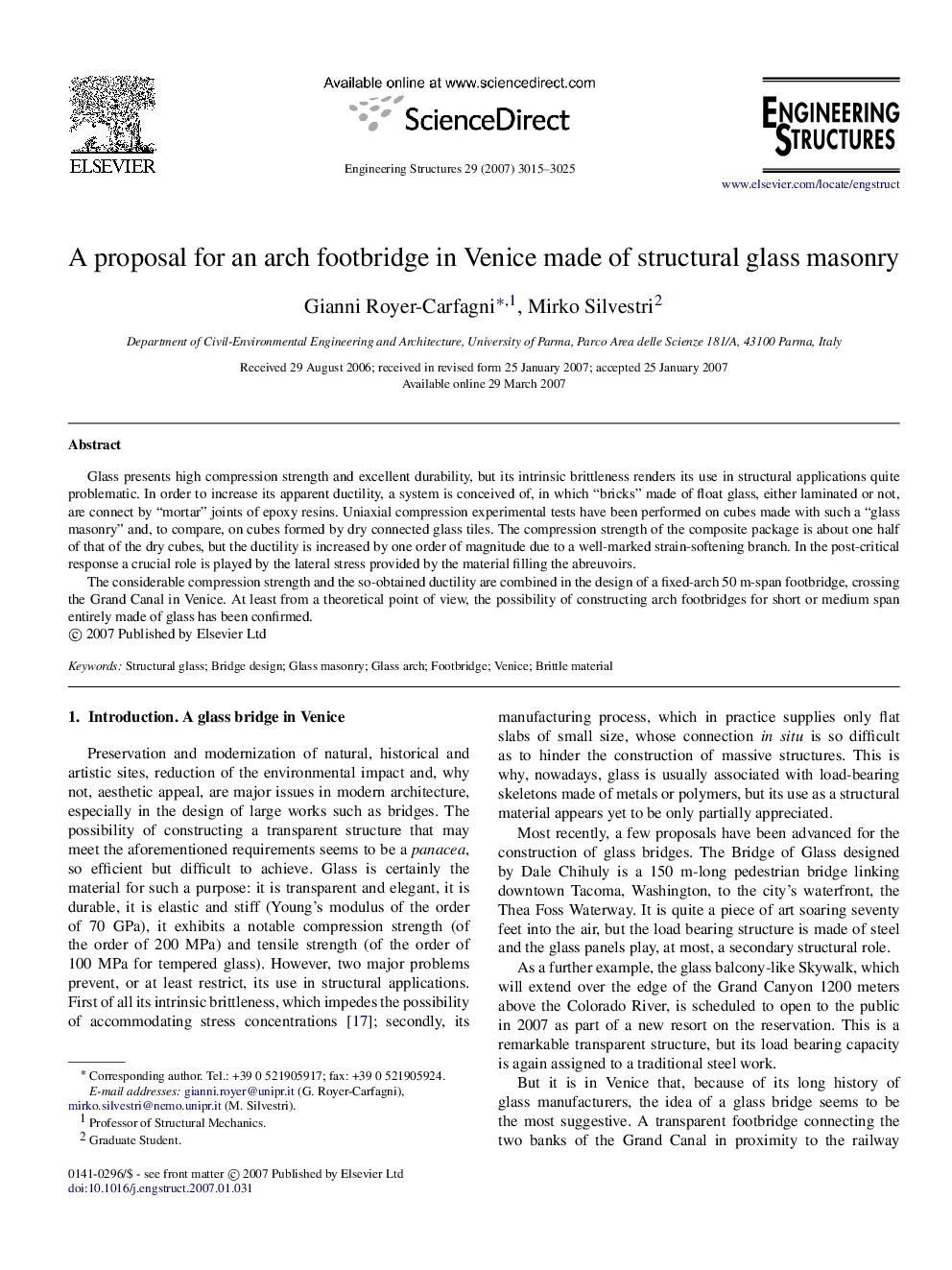| Article ID | Journal | Published Year | Pages | File Type |
|---|---|---|---|---|
| 269397 | Engineering Structures | 2007 | 11 Pages |
Glass presents high compression strength and excellent durability, but its intrinsic brittleness renders its use in structural applications quite problematic. In order to increase its apparent ductility, a system is conceived of, in which “bricks” made of float glass, either laminated or not, are connect by “mortar” joints of epoxy resins. Uniaxial compression experimental tests have been performed on cubes made with such a “glass masonry” and, to compare, on cubes formed by dry connected glass tiles. The compression strength of the composite package is about one half of that of the dry cubes, but the ductility is increased by one order of magnitude due to a well-marked strain-softening branch. In the post-critical response a crucial role is played by the lateral stress provided by the material filling the abreuvoirs.The considerable compression strength and the so-obtained ductility are combined in the design of a fixed-arch 50 m-span footbridge, crossing the Grand Canal in Venice. At least from a theoretical point of view, the possibility of constructing arch footbridges for short or medium span entirely made of glass has been confirmed.
